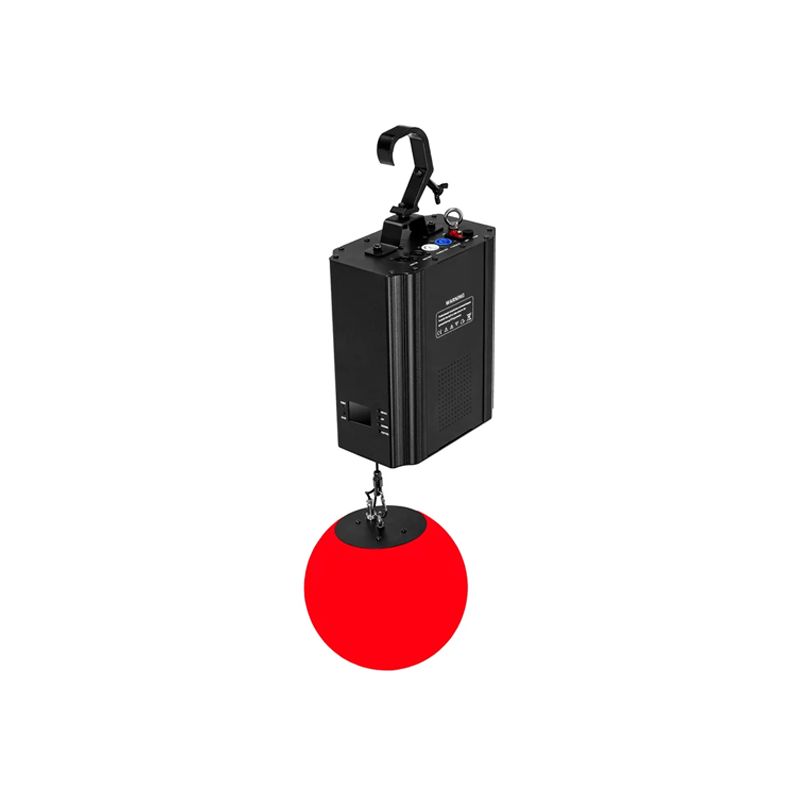Lifting Lighting: How Motion Is Transforming Modern Stage Design
Classification:
summary description]
When people search for lifting lighting, they’re usually not just looking for another type of stage light. They’re looking for something different—a lighting system that moves, breathes, and transforms the atmosphere of an event in real time. Whether it’s a concert, a nightclub, or a grand stage show, lighting has become a favorite choice among designers who want their spaces to come alive.
What Exactly Is Lifting Lighting?
In simple terms, lifting lighting is a dynamic system where lights are attached to motorized winches that allow them to move vertically. Each fixture—whether it’s a glowing LED ball, a ring, or a strip—can rise and fall smoothly, perfectly timed to the rhythm of the music or a pre-programmed DMX sequence.
It’s not just about brightness anymore. It’s about motion. Lifting lighting turns static illumination into a living visual performance.
Why It’s So Popular in Modern Stage Design
1. A 3D Experience That Feels Alive
Unlike fixed lights that only color a space, lifting lights reshape it. When dozens—or even hundreds—of fixtures move together, they create a flowing, three-dimensional world of light. Audiences don’t just watch; they feel surrounded by it.
2. Designed for Immersion
Event organizers are chasing experiences, not just events. Lifting lighting delivers exactly that. It merges motion, light, and rhythm to create immersive scenes that connect emotionally with audiences.
3. Fully Programmable and Easy to Control
With DMX512 or Art-Net systems, every movement and color transition can be programmed in advance. Whether you want a slow, graceful motion or a fast-paced dance of light, it’s entirely under your control.
4. Space-Saving and Scalable
Because the system hangs from the ceiling, it keeps your floor area open. You can start with a few fixtures or expand to a full kinetic installation—the system scales easily with your needs.
Main Types of Lifting Lighting Systems
- Kinetic LED Balls: Lightweight spheres that move to form waves or patterns overhead.
- Lifting Beam Rings: Circular fixtures that rise and fall, often synchronized for futuristic stage effects.
- Lifting Tubes: Linear LED tubes that move vertically to create a sense of rhythm and flow.
- Custom Installations: Bespoke lighting structures designed to match specific venue requirements or artistic visions.
Each type brings a unique aesthetic, but all share one goal—to make light move in harmony with space and sound.
How the Technology Works
Every lifting lighting setup relies on three core components:
- DMX Winches that lift and lower the fixtures precisely.
- Control Software that programs timing, speed, and synchronization.
- Lighting Fixtures—the visible elements that carry color, shape, and design.
These elements work together seamlessly. Once programmed, the system performs like choreography—smooth, precise, and perfectly timed.
How to Choose the Right Lifting Lighting System
When planning your project, take a moment to consider:
- Weight Capacity: Ensure each winch can safely handle the load it carries.
- Speed and Precision: Adjustable speed allows for subtle mood changes or rapid transitions.
- Compatibility: The system should integrate with your existing DMX or lighting setup.
- Safety: Certified components and built-in brakes protect both equipment and people.
- Customization: Every venue is different; flexibility is key to achieving the best results.
A well-chosen system not only performs beautifully but also operates safely for years.
Where Lifting Lighting Works Best
You’ll see lifting lighting across a wide range of environments:
- Concerts and Music Festivals – to enhance live performances with synchronized visuals.
- Nightclubs and Bars – to match motion and rhythm with the pulse of the crowd.
- Trade Shows and Exhibitions – to attract attention and emphasize design innovation.
- Corporate Events and Fashion Shows – to highlight themes and branding with elegance.
- TV Studios and Stage Productions – to create flexible lighting scenes in limited spaces.
No matter the venue, the system adds depth, drama, and energy.
Why Professionals Love It
Designers and event planners appreciate lifting lighting for one main reason: creative freedom. It lets them design shows that evolve moment by moment, rather than staying static. When done right, the audience doesn’t just see the light—they experience it.
That sense of motion turns every show into a story told through light.
The Importance of Working with a Reliable Manufacturer
Since lifting lighting combines motors, electronics, and control systems, it’s not a simple plug-and-play setup. Working with an experienced manufacturer ensures every part—from the winch to the LED module—is built for stability and safety.
A professional supplier offers:
- Expert technical support and installation guidance
- Custom-tailored designs for your venue
- Certified components and reliable safety systems
- Long-term after-sales service
Xlighting, for example, specializes in kinetic and lifting lighting solutions that combine technology and artistry. Their systems have been used in venues worldwide, offering creative possibilities far beyond traditional lighting setups.
Final Thoughts
Lifting lighting has changed the way we think about stage design. It adds motion, emotion, and life to once static spaces. For designers, it’s a tool of endless creativity. For audiences, it’s a breathtaking experience that lingers long after the lights go out.
Previous Page
More Cases



